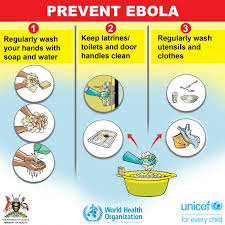
The infection of a Spanish nurse with the Ebola virus has raised concern in the world, at a time when health authorities, including the World Health Organization, have been providing guidance for weeks in an attempt to contain the epidemic.
The guidelines for preventing Ebola are based on simple measures, such as washing hands with disinfectant liquid, which must be respected with great precision, in addition to monitoring the appearance of symptoms of the disease, such as temperature, in a person suspected of being infected.
The person is not considered contagious as long as he does not show symptoms. The incubation period ranges from two to 21 days.
Symptoms of Ebola include fever, headache, joint and muscle pain, weakness, diarrhea, vomiting, lack of appetite, and in some cases, bleeding.
The Ebola virus is not transmitted through the air like influenza or measles, but by direct contact with fluids secreted by an infected body or medical equipment such as syringes or contaminated objects and clothing.
The infection can be transmitted, but with less risk, through contaminated surfaces that must be cleaned and disinfected according to appropriate methods.
The World Health Organization stated that feces and vomiting are the most common causes of infection.
The virus was detected in the breast milk, urine, and semen of infected people. The organization added that transmission of infection through saliva is possible, but it is very limited.
The organization revealed that the live virus was never isolated from sweat.
Doctor Stephen Monroe, associate director of the US National Center for Infectious Diseases at the Center for Disease Monitoring and Prevention, said that it is “unlikely” that the Ebola virus would be transmitted between passengers on a plane or train because there is no direct contact with bodily fluids.
The virus can also be transmitted through contact with infected bodies during religious rituals.
In another context, medical team members must protect themselves by using sanitary masks, special glasses, and gloves while treating patients, and washing hands regularly before and after contact with any patient with fever.
Originally, Ebola was transmitted to humans after contact with the blood, organs, or fluids of infected animals. The World Health Organization revealed that transmission of the virus in Africa was also recorded through contact with infected or dead monkeys and gorillas, and recommended avoiding eating meat from animals that live in the jungle.






